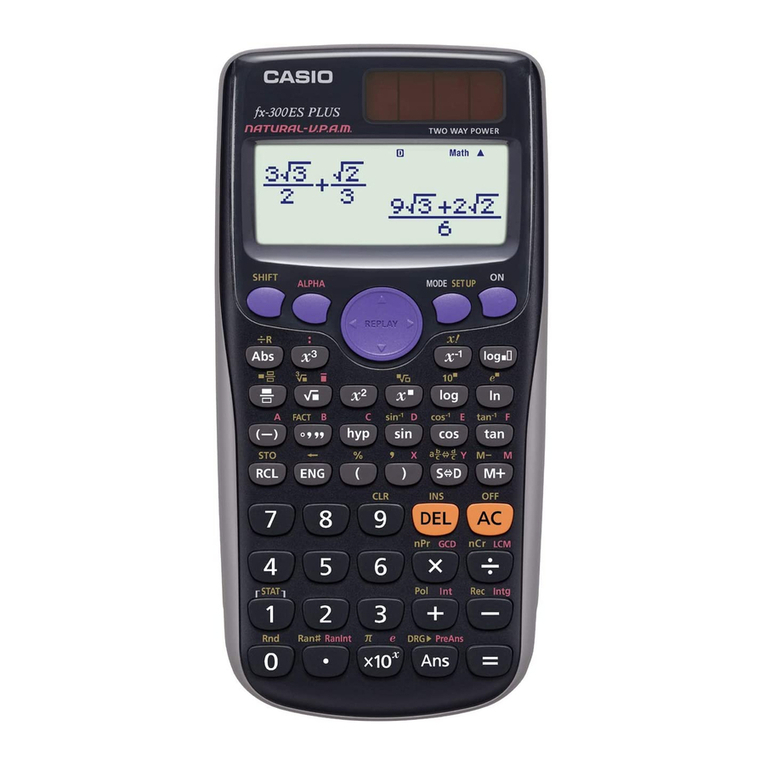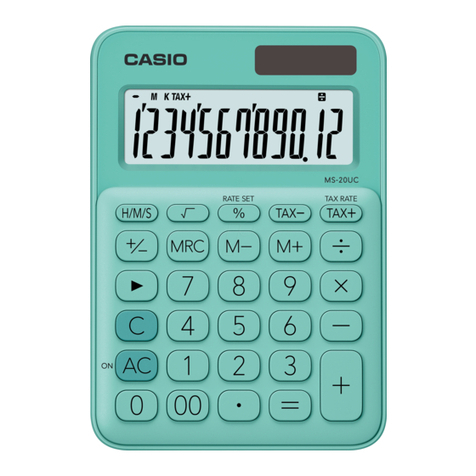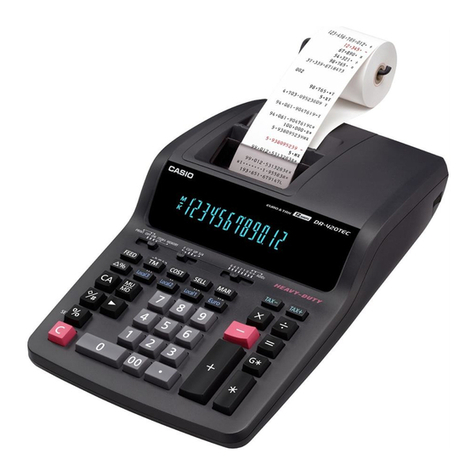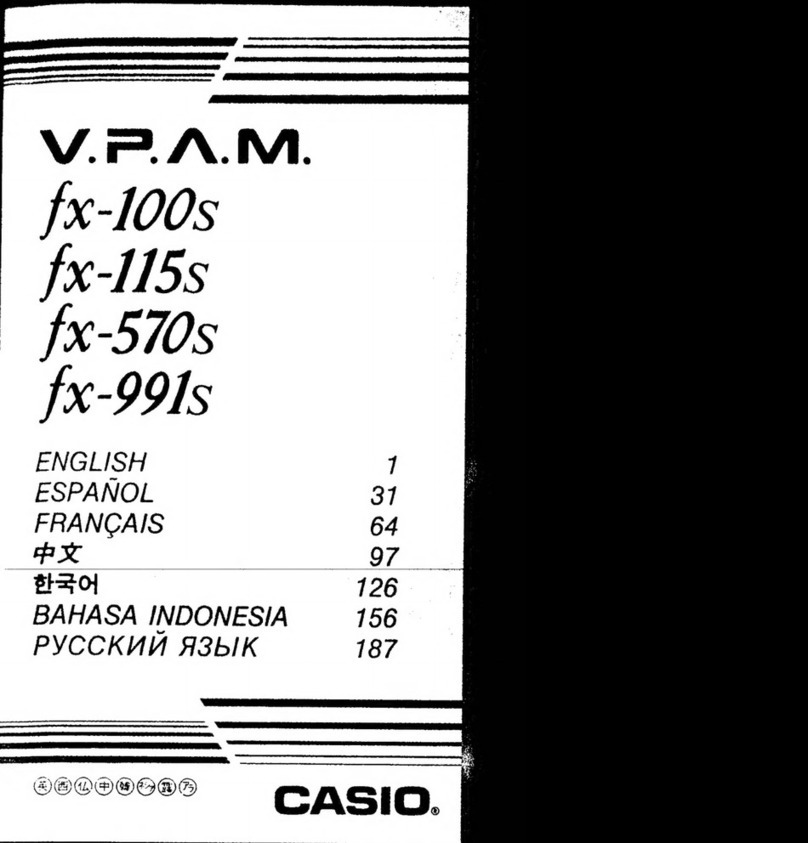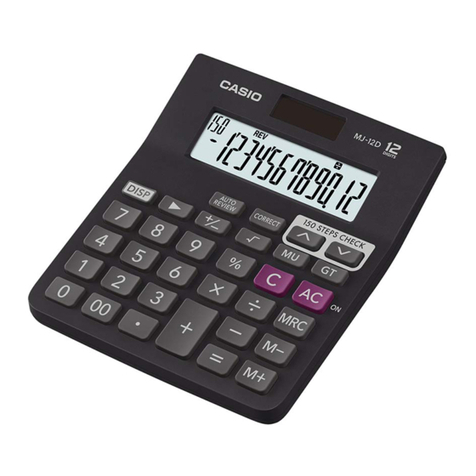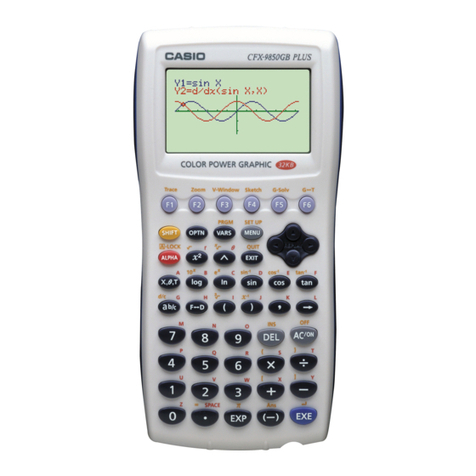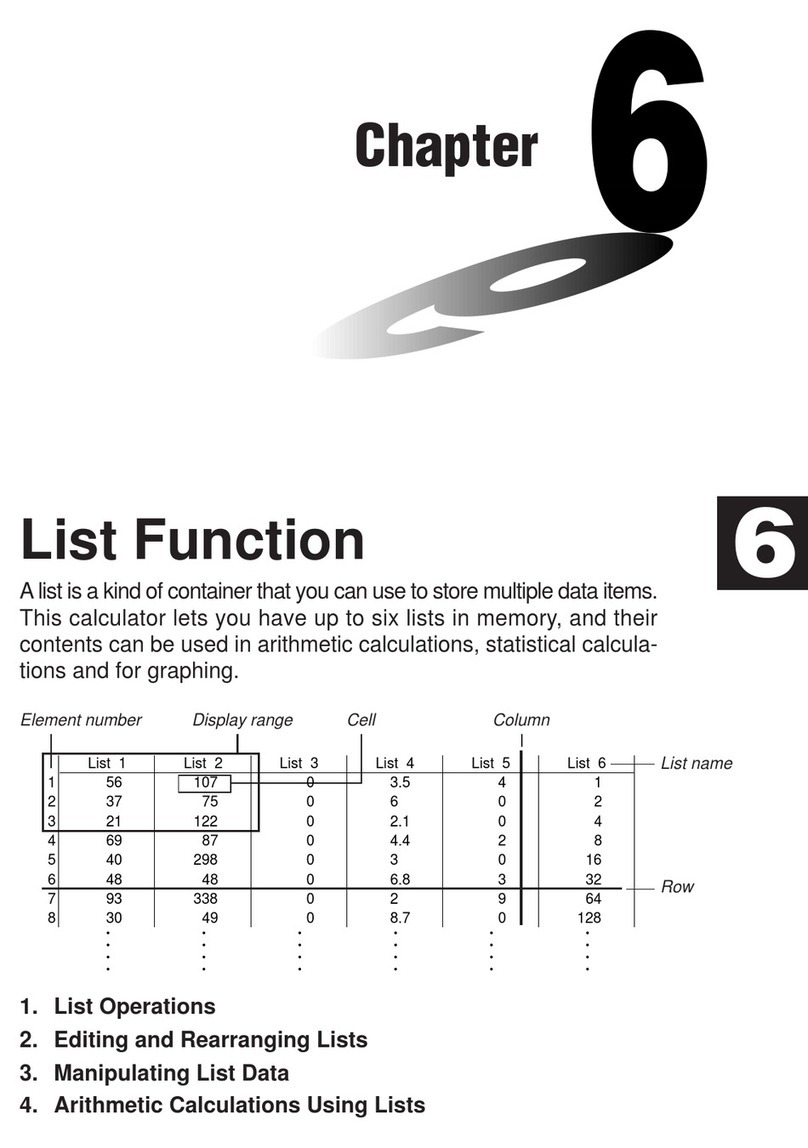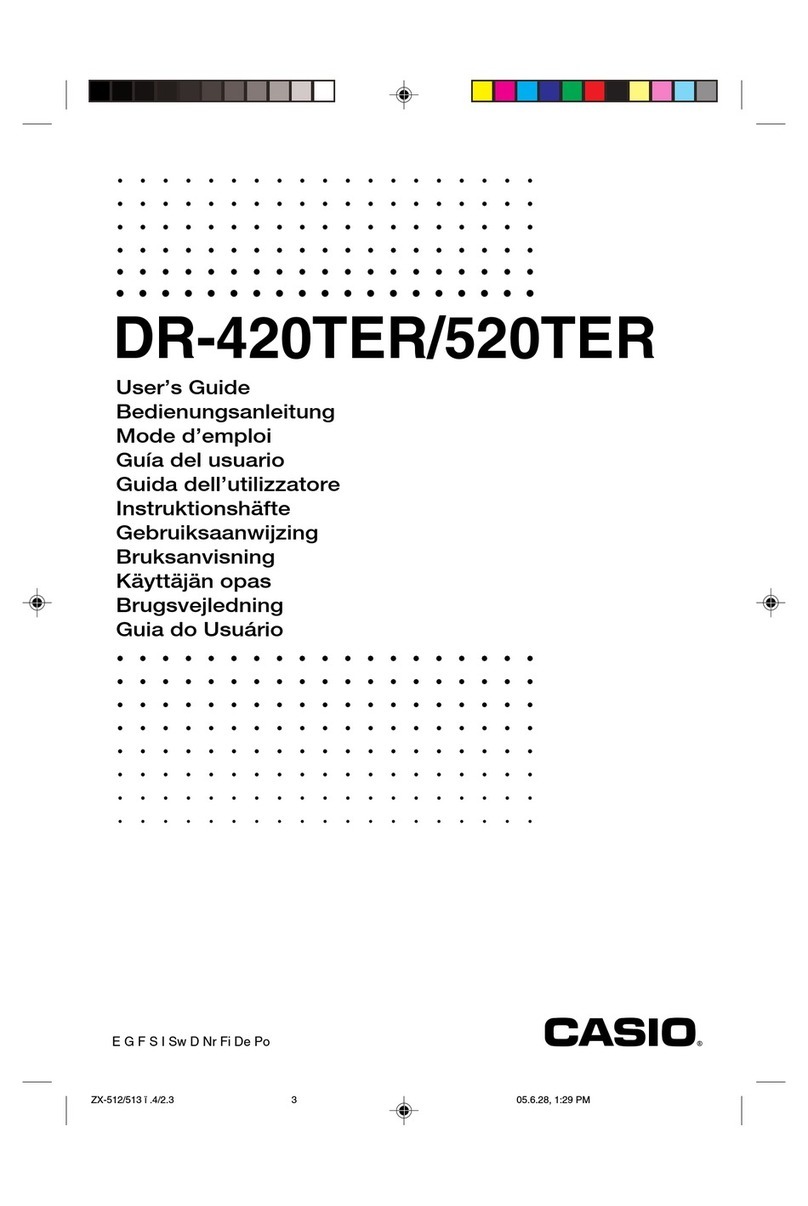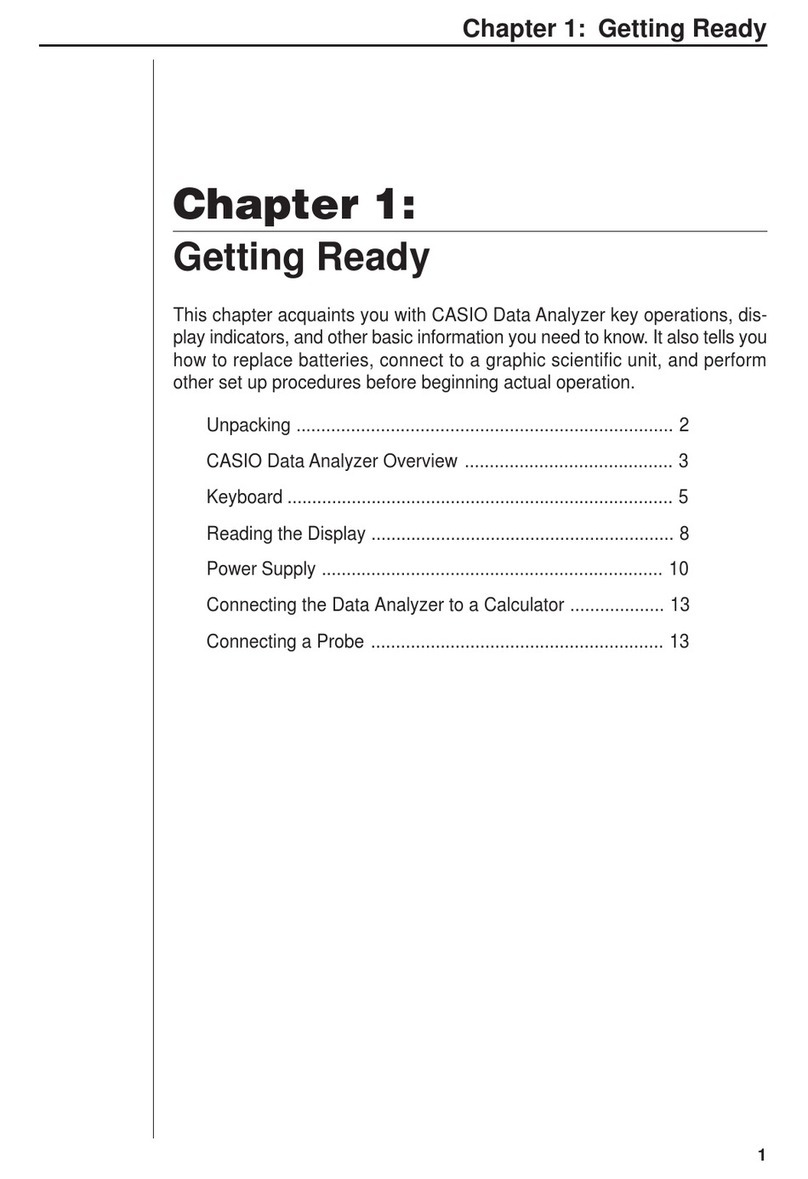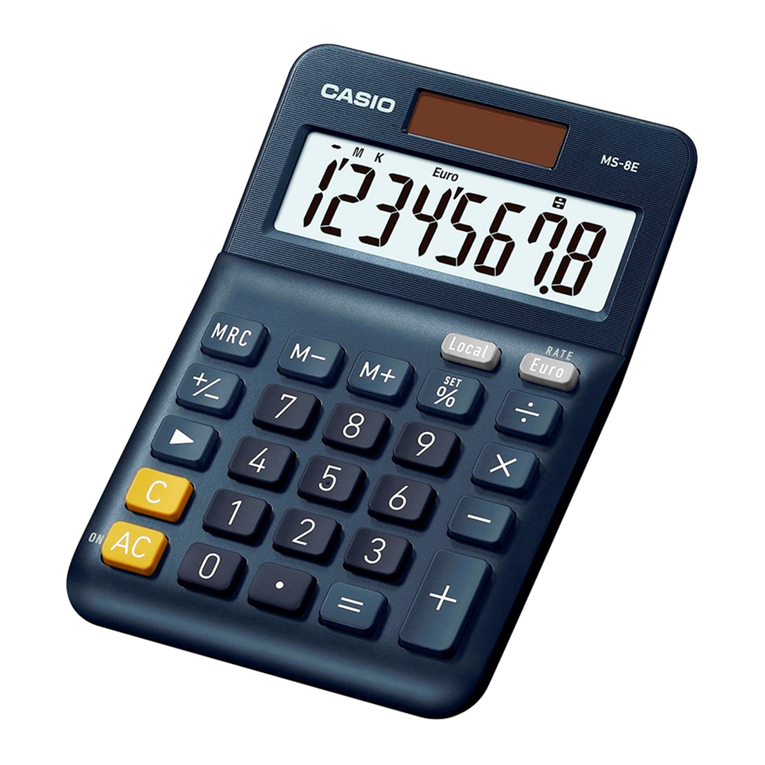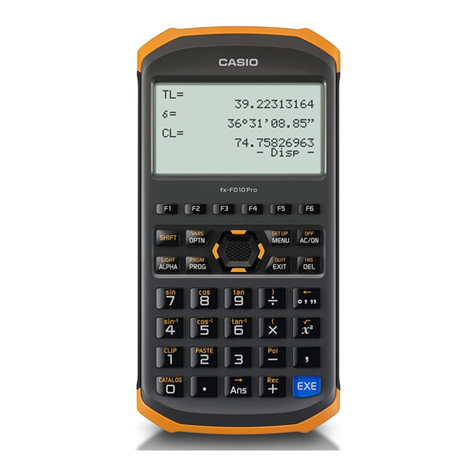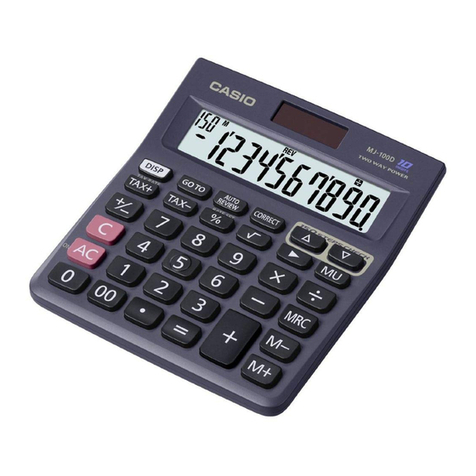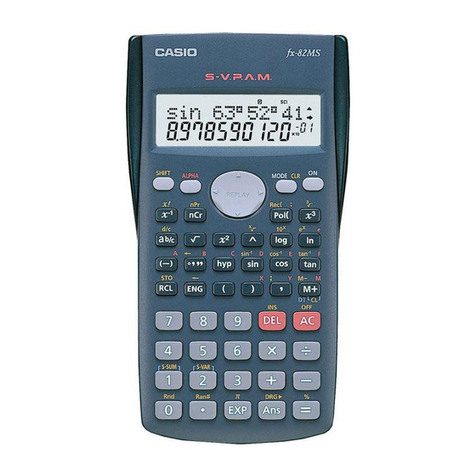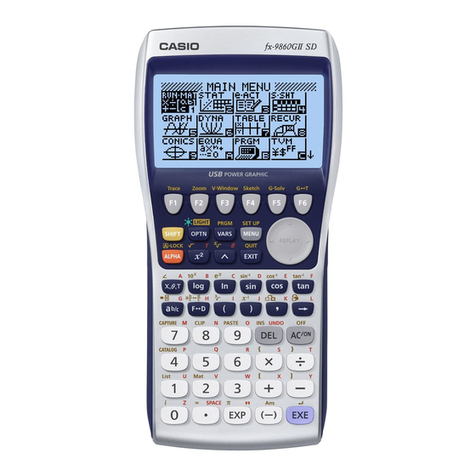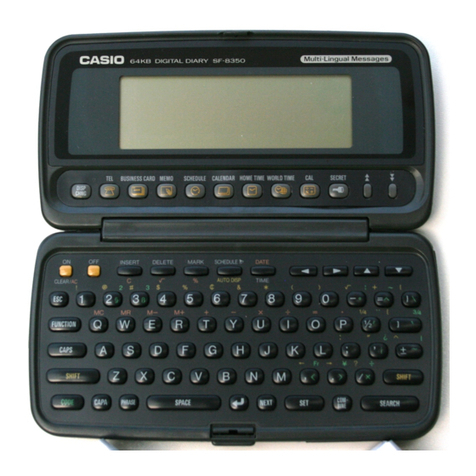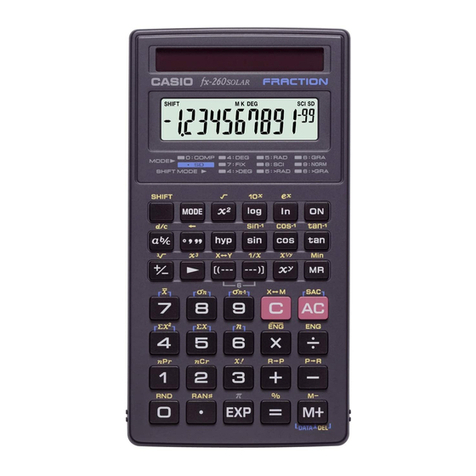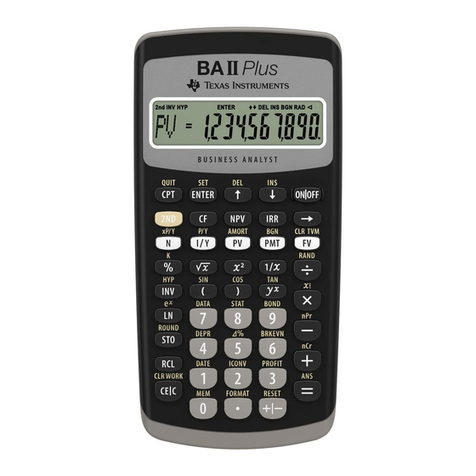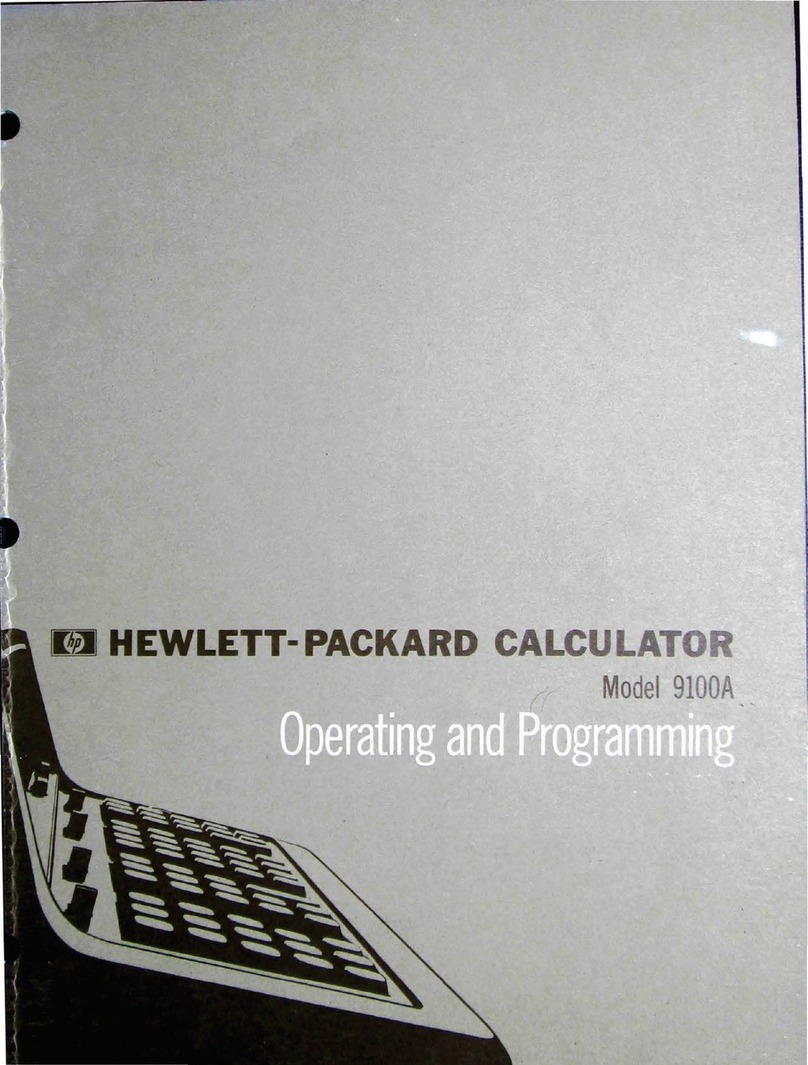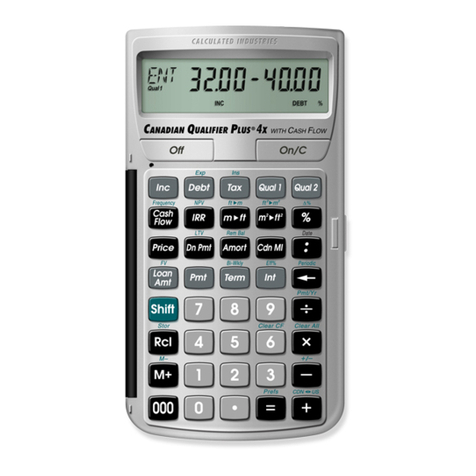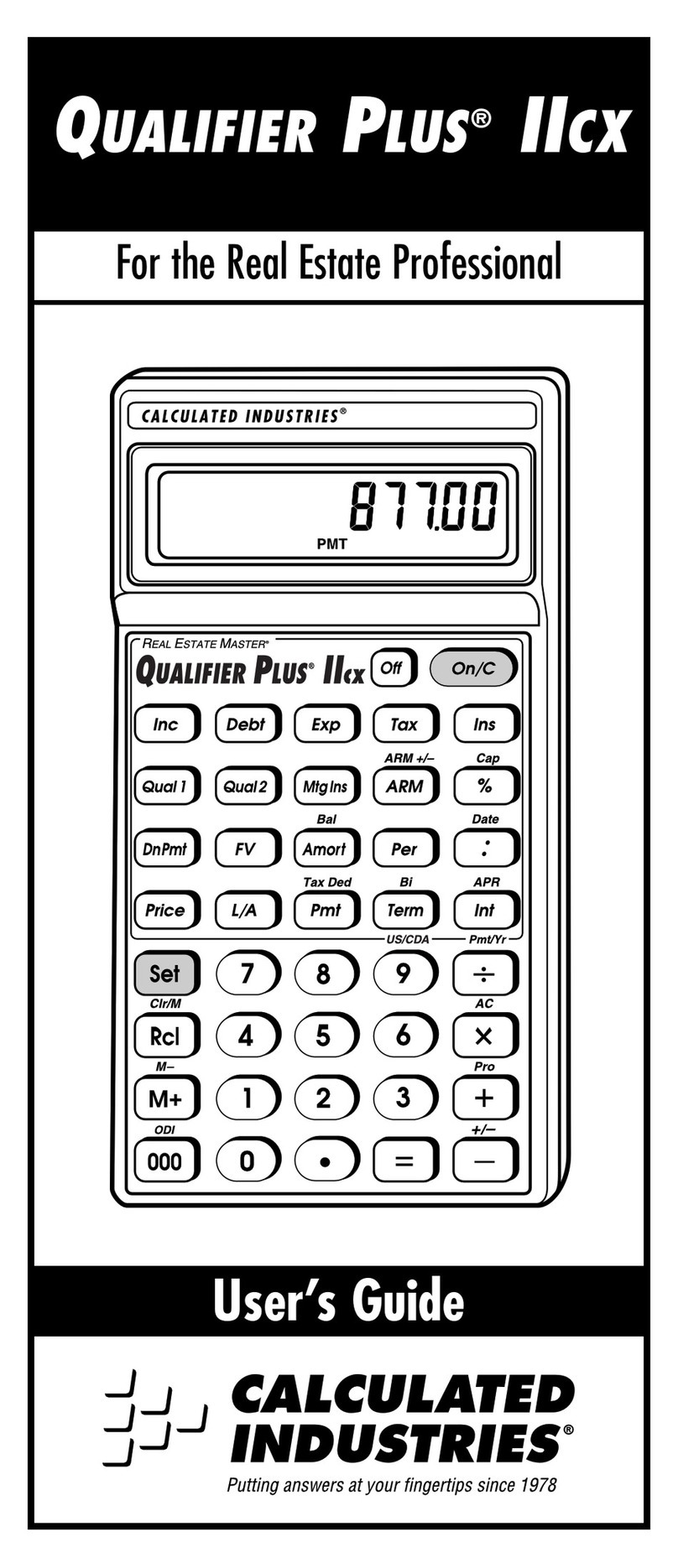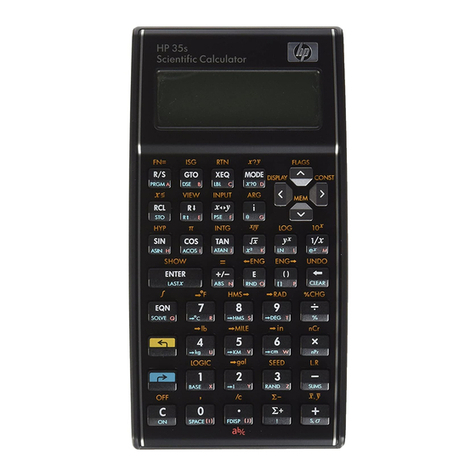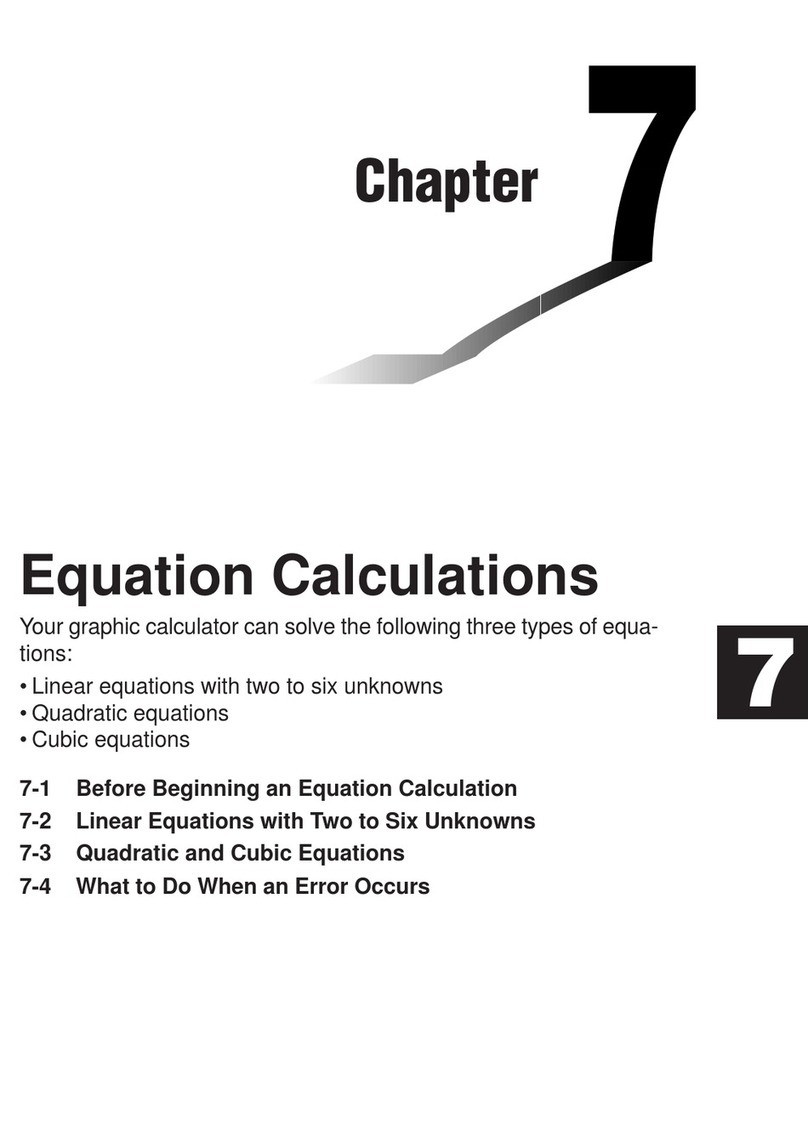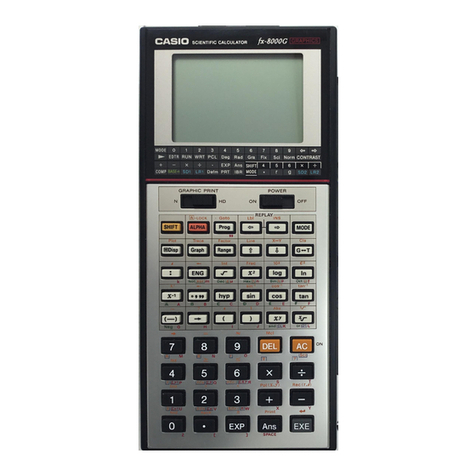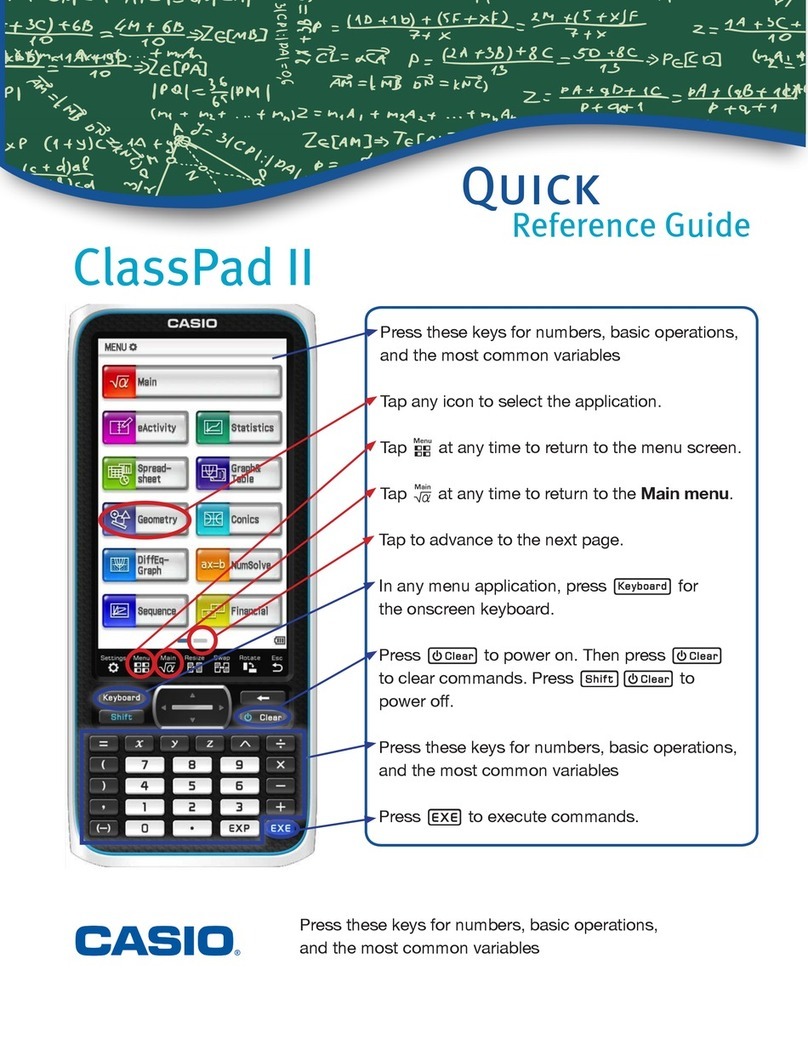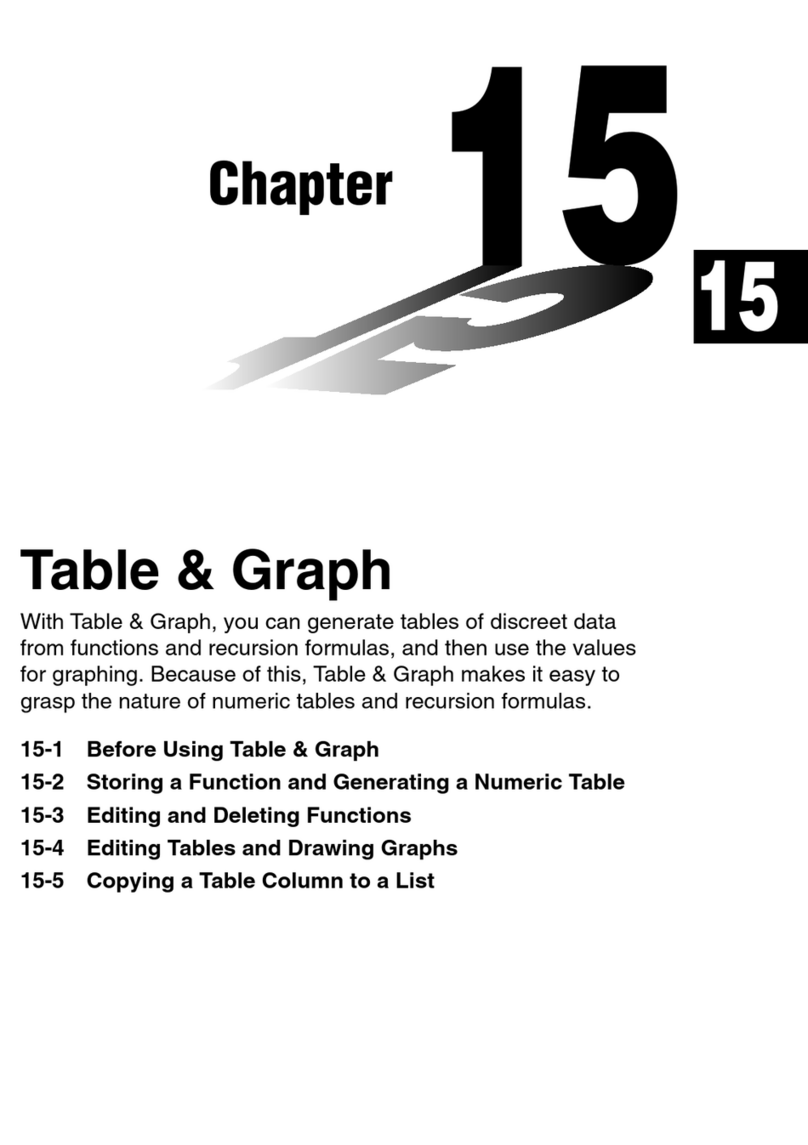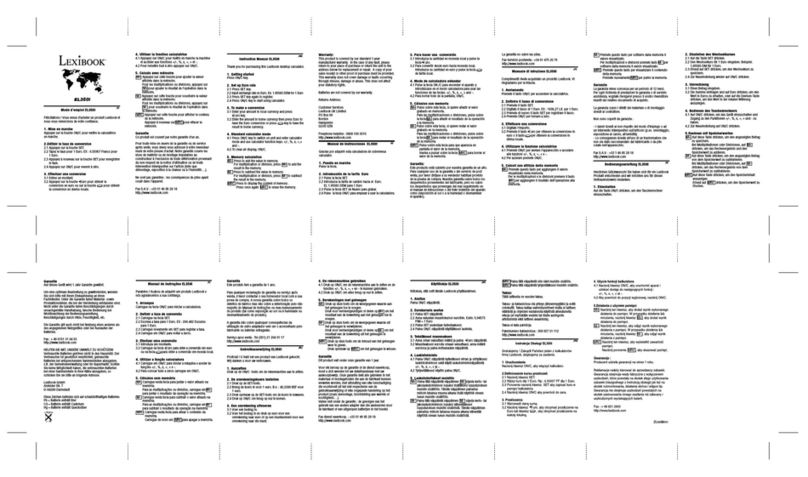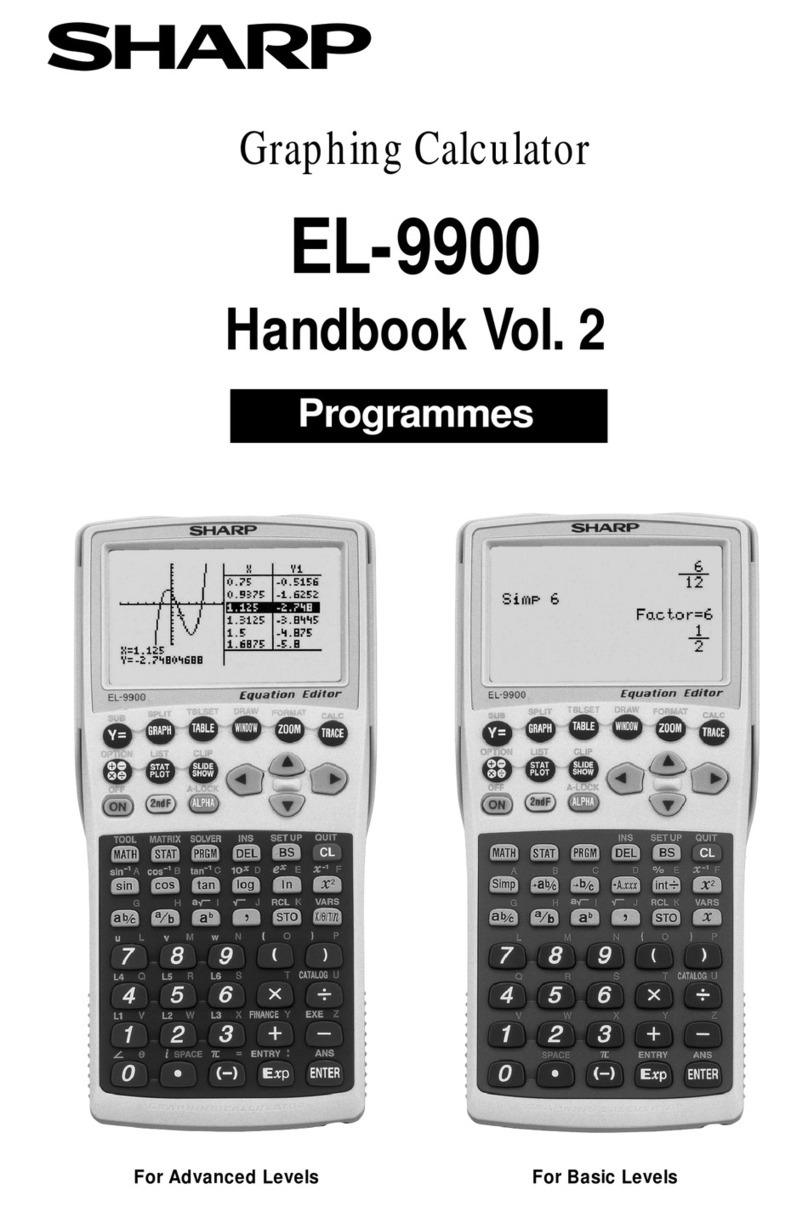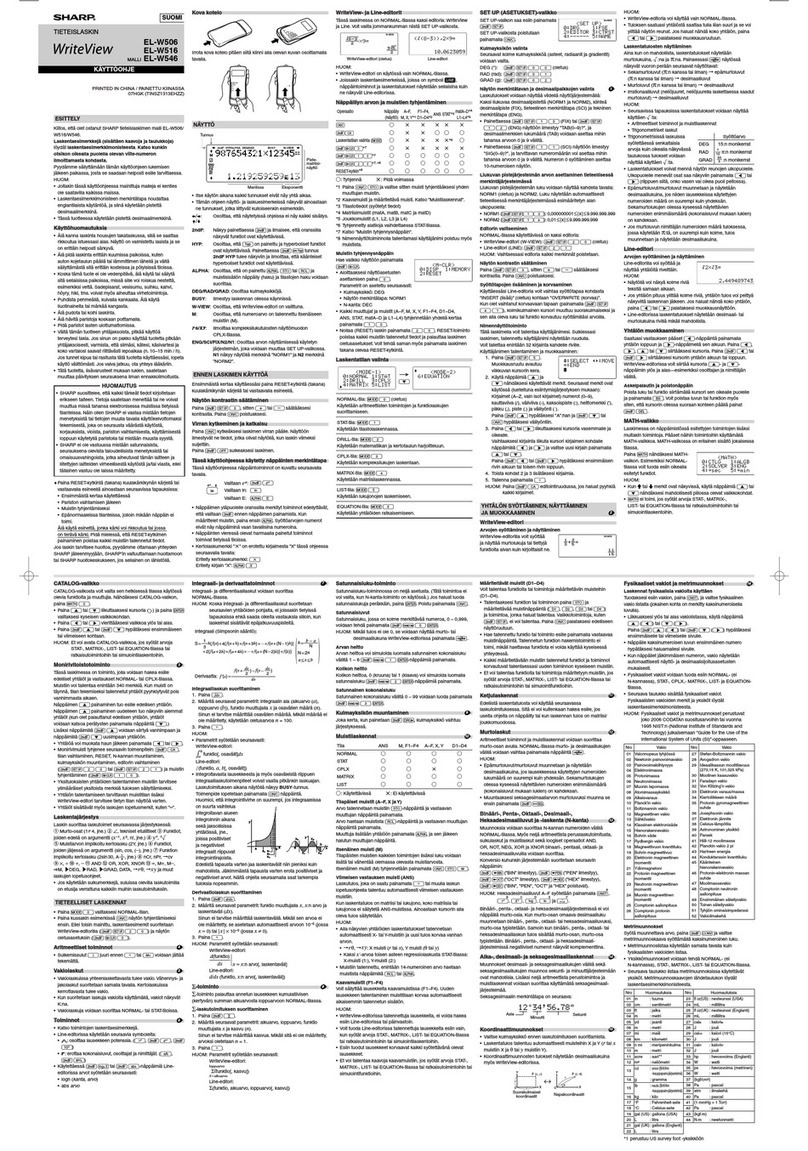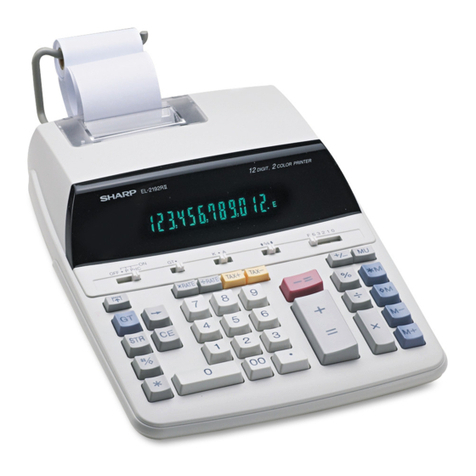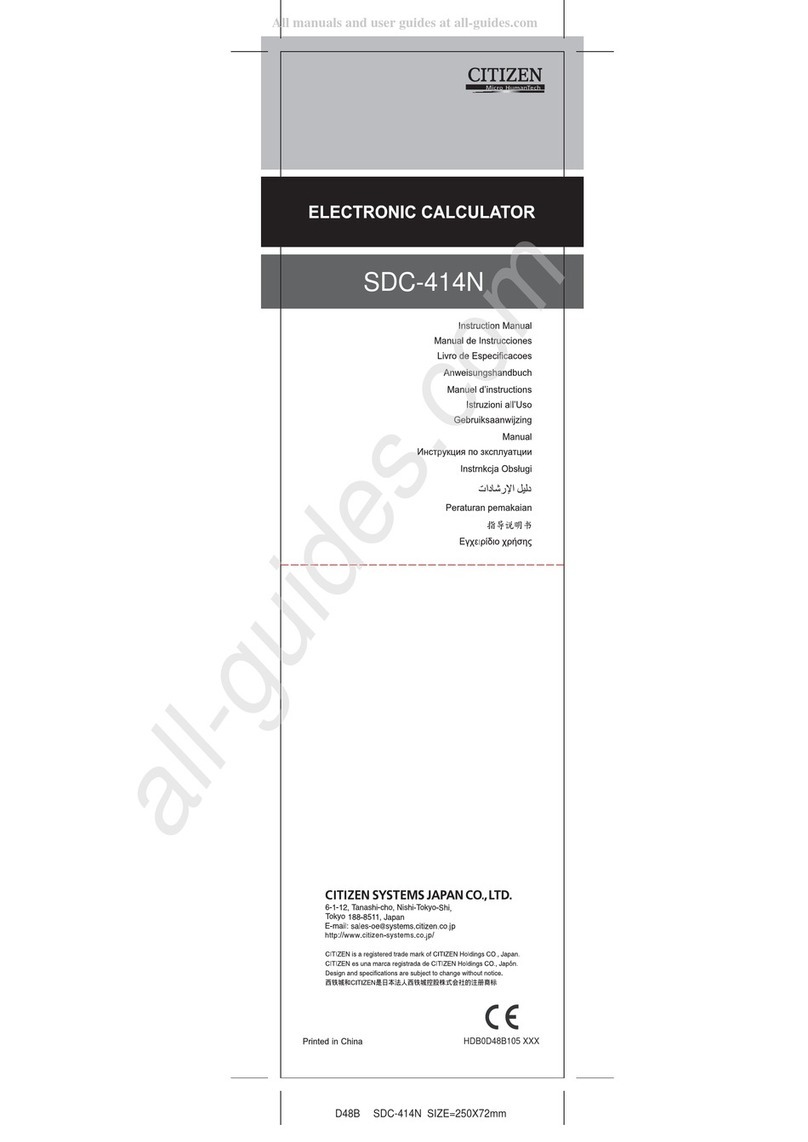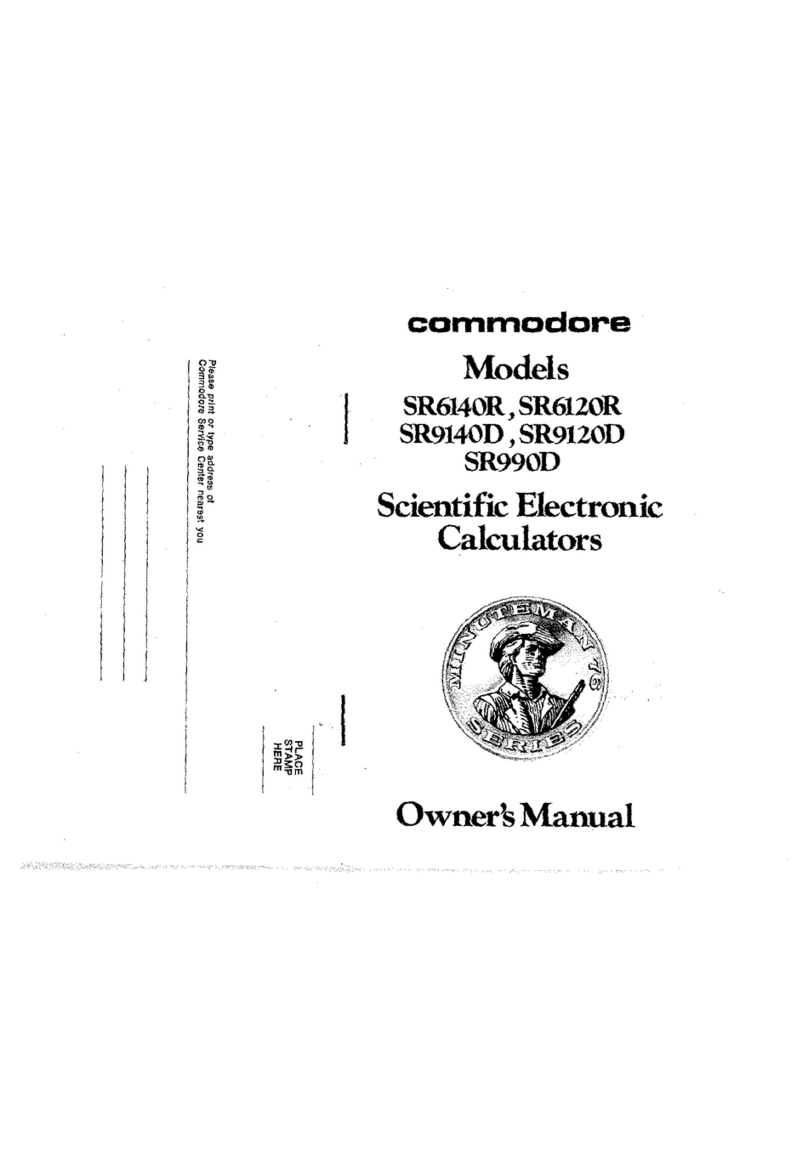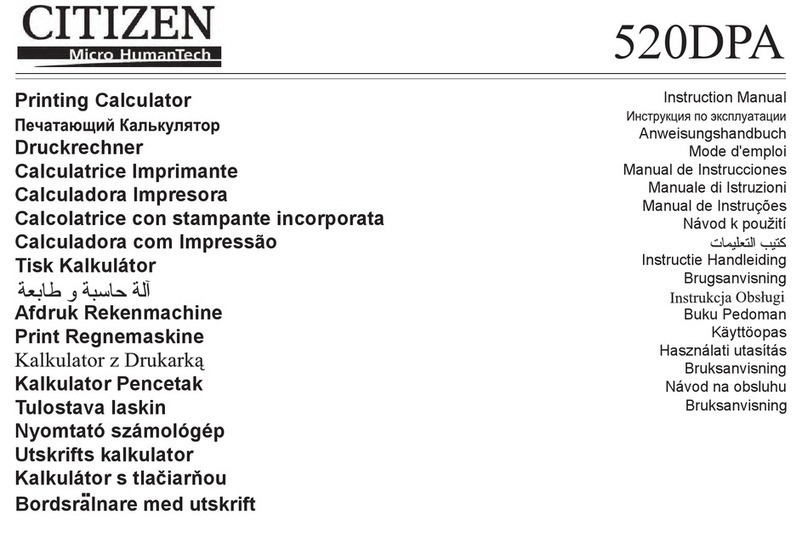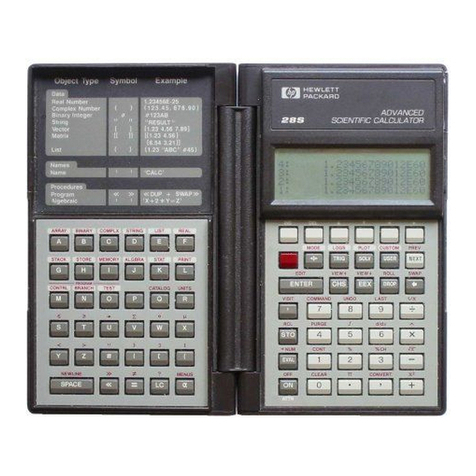~ [!) Rdec [D ON ; m OFF SpeciIies whether or not to display
calculation resUiiSUSlng recurmg deanaliorm.
~ m Disp [D Dot; m Comma Specifies whether to display a dot or
a comma for the calculation result decimal point. A dot is always displayed
during input.
Note: When dot is selected as the decimal point, the separator for multiple
results is a comma (,). When comma is selected, the separator is a
semicolon (;).
~ !II CONT~ Adjusts display contrast. See "Adjusting Display
Contrast" for details.
Initializing Calculator Settings
Perform the foltowing procedure to initialize the calculator, which returns the
calculation mode to COMP and returns alt other settings, including setup
menu setlings, to their initialdefaults.
(!!iJ [[)(CLR) [D (Setup)§) (Yes)
Inputtinq E~~t8SSiohS' ~nd VallAt$ 1
Basic Input Rules
Calculations can be input in the same form as they are written, When you
press §) the pIioIity sequence of the input calculation will be evaluated
~ and the result willappear on the display.
/4.sD30xl30~10x3)=I20
4 !ID~30m !IDIIJ30ffi 10(2g3 m §)
IJ. I I
*2 *3
m MlIII...
4xsin(30)x(30+1~
120
., Input of the closing parenthesis is required tor sin, sinh, and other functions
that includeparentheses. .
.,These multiplication symbols (x) can be omitted. A multiplication symbol
can beomittedwhenitoccursimmediatelybeforeanopeningparenthesis,
immediatelybefore sin or other functionthat includes parentheses,
immediatelybeforethe Ran# (randomnumber)function,or immediately
beforea variable(A,S, C, 0, E, F,M,X,Y),scientificconstants,1tore.
., The closingparenthesis immediatelybefore the §) operationcan be
omitted.
Input example omitting (2g" and CD" operations in the above
example. . m MaUl"
4@30 CDIIJ30ffi 101ID3§) ,4S1n(30)(30+10X3
120
Note: .It the calculation becomes longer than the screen width during
input, the screen willscroll automatically to the right and the indicator will
appear on the display. When this happens, you can semi back to the left by
using @ and <e) to move the cursor. .When LiIear Display is selected,
pressing @ willcause the cursor to jump tothe ~ of the calculation,
while ~ will jump to the end. .When NaIuIaI Display is selected, pressing
E-7
<e) while the cursor is at the end of the input calculation willcause ~to jump
to the beginning, while pressing @ while the cursor is at the beginning will
cause it to jump to the end. .You can input up to 99 bytes for a calculation.
Each numeral, symbol, or function normally uses one byte. Some functions
require three to 13 bytes. .The cursor will change shape to . when there are
10 bytes or less of allowed input remaining. It this happens, end calculation
input and then press §).
Calculation Priority Sequence
The prioritysequence of input calculations is evaluated in accordance w~h the
rules below. When the priorityof two expressions is the same, the calculation
is performed trom left to right.
Inputting with Natural Display
Selecting Natural Display makes it possible to input and display fractions
and certain functions (log, XZ,XZ,x', r., >r., 'ro, x-', 10', e',l, dJdx,I, II,
Abs) just as they are writteninyourtextbook.
2+-12
1+-12
m
E-8
Isl Parenthetical expressions
2nd Functions that require an argument to the right and a closing
parenthesis "j" following the argument.
3rd Functionsthatcome after the input value (r, x3,x-1,x!, 01.,°," g,
%, I), powers (xl), roots ('ro)
4th Fractions
Negative sign H, base-n symbols (d, h, b, 0)
Note: When squaring a negative value (such as 2), the value
being squared must be enclosed in parentheses (IIJ IBJ2 m
5th §). Since XZhas a higher priority than the negative sign,
inputting IBJ2 §) would result in the squaring of 2 and then
appending a negative sign to the result. Always keep the priority
sequence in mind, and enclose negative values in parentheses
when required.
6th Metric conversion commands (cmin, etc.),
STAT Mode estimated values (x, 9, XI,X2)
7th Multiplication where the multiplication sign is omitted
8th Permutation (nPr), combination (nCr), complex number polar
coordinate symbol (L)
9th Dot product (.)
10th Multiplication (x), division (+), remainder calculations (+R)
11th Addion, subtraction (+,-)
12th Logical AND(and)
13th Logical OR, XOR, XNOR (or, xor, xnor)

